In this guide, I will attempt to make it as easy as possible to explain how to create a VideoCD of your AVI (DivX / XviD) movie, This version of the guide is updated to the latest programs and will guide you from Start to Finish in one go! using the most common and freeware programs! and also included is Chaptering, do remember MOST of the settings used here are DEFAULT, I did not make any changes, and if I did have, they are mentioned in the guide.
Identification - GSpot
Audio Extraction - VirtualDub
Encoding - MainConcept MPEG Encoder
Authoring - VCDEasy ( & ASPI Layer for your system! - use the search for "WinASPI" or scrool to the bottom of the page!)
Before we start with the guide, we must make sure the tools we
are
going to use actually work and setup correctly! Unzip the tools
you are going to be working with into the SAME folder, and
once you do, make sure all applications work, and then we are
ready to begin! For this example i've used "Superman - The Movie
Special Edition" (NTSC/154min/DD51@384k) and we will be converting it
to a Video-CD NTSC Standard so it will fit on two 80min CDR
media. (or 74min with 2min Overburning, which is only if your CDRW
drive and media supports it!), do remember that 740mb filesize
will fit into 74min CDR and 800mb Filesize will fit into a 80min CDR
(in VCD 1min = 10mb!).
NOTE:
This current guide support Subtitles using the VobSub filter for
VirtualDub, there are many other ways as well, but this is what will be
used here, if you want to use other type of subtitles in your movie I
suggest you use one of the other great guides on VideoHelp!
This guide will be divided into the following sections:
Part 1 - AVI IdentificationPart 2 - Audio Extraction
Part 3 - FrameServing
Part 4 - Encoding
Part 5 - Authoring
Part 6 - Troubleshooting
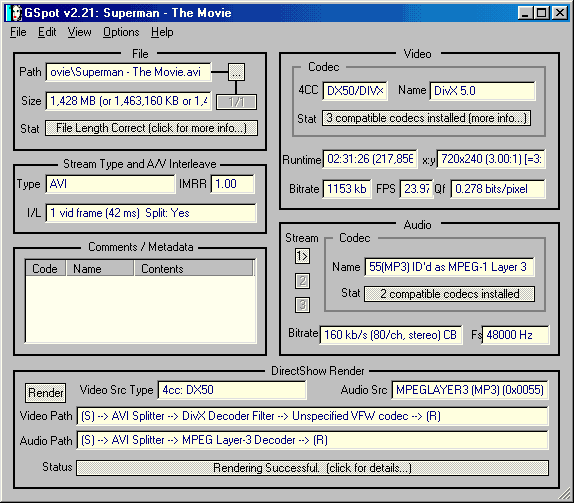
It makes it possible for an encoder (old or new) to encode the movie from the VOB files with the addition of selected filters, that it would not be capable of doing otherwise.
Pre-Step A
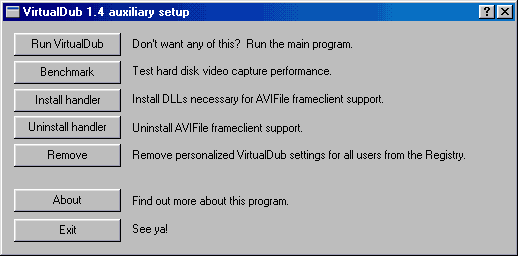
Pre-Step B
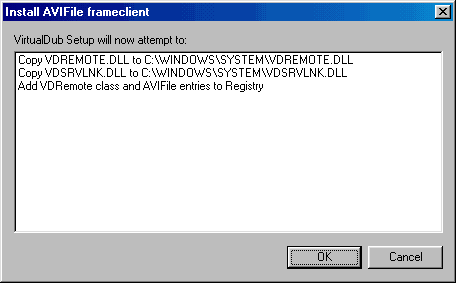
a)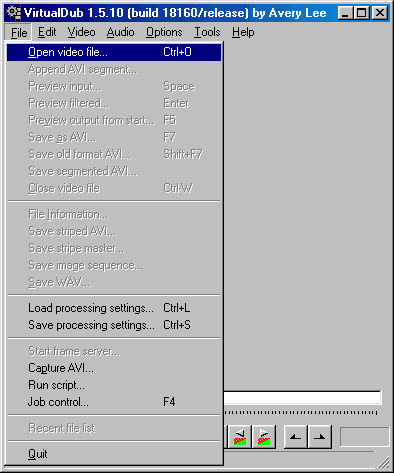 b)
b)

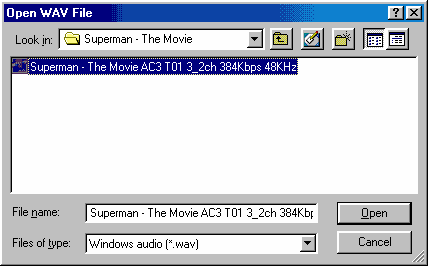
Step 1d - To add "Filters" such as Subtitles, Click on "Video" and select "Filters" if you want to add the VobSub filter.

Step 1e) - In the Filters menu, click on the "Add..." button.

Step 1f) - In the "Add Filter" selection, if your VobSub is not there, click on the "Load..." button.
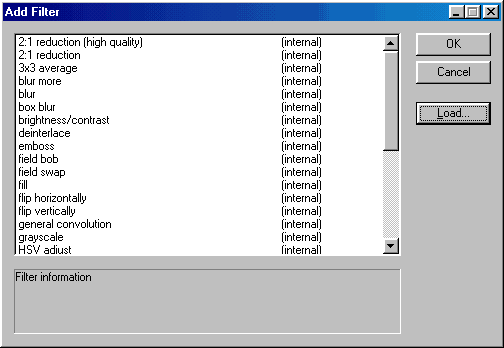
Step 1g) - Use the "Load external filter" to locate and open the "textsub.vdf" file.
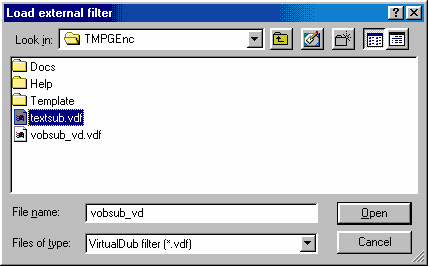
Step 1h) - After you have loaded the TextSub filter, Click on it, and press the "OK" button
NOTE: Click Here to Configure the TextSub Filter for Subtitles in your Movie!
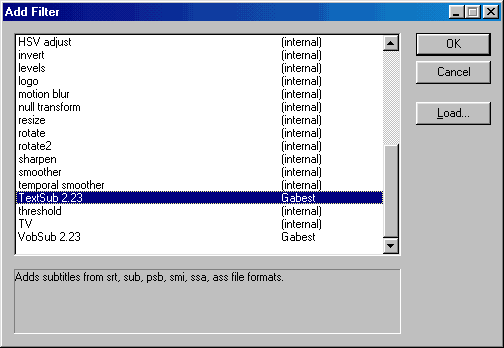
Step 2(a/b) - Click on the "File" menu and then click on "Start frame server..." and when you get the "Frameserver setup" click on "Start"
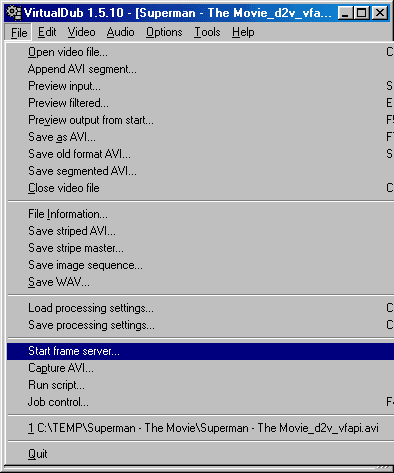 b)
b) 
Step 2(c/d) - After you clicked on the "Start" button, you will be asked to save the new frameserved file, make sure you add .VDR at the end of the file, as it is NOT being added automaticly. This will make VirtualDub ready to serve, when you are done with encoding, press on the "Stop serving" button.
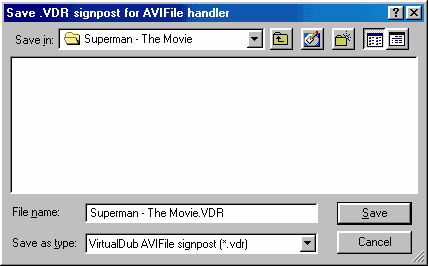
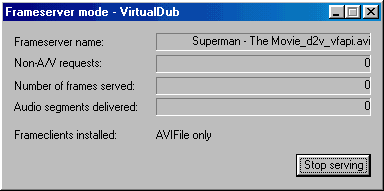
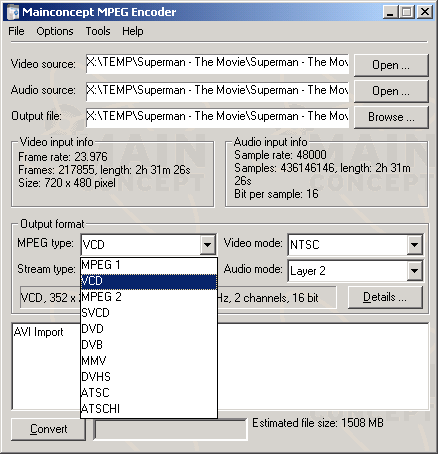
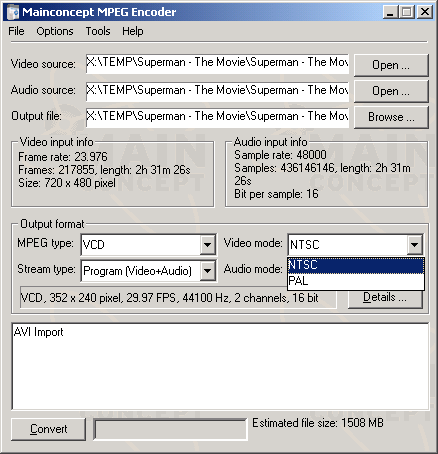
Step 3 (a/b/c) - Click on "Details" and here you can customize your movie's Video and Audio
sections, everything is selected automaticly, but you can of course make
changes if you know what you are doing.
You can also by using the "Enable file splitting"
option, select at which size you want the encoder to split the file, incase
your movie is longer then one CD as in Picture 3b. If your movie is Wide Screen, click on the "Crop & Scale" button and set your movie "Height" (195 should give you a good Wide Screen) as in Picture 3c.
a) 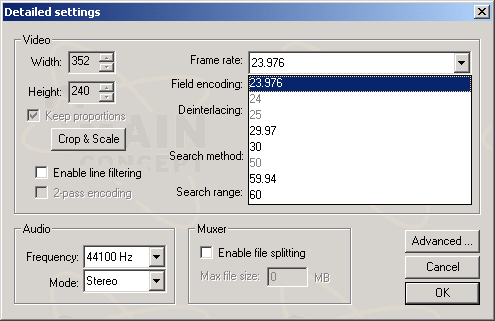
b) 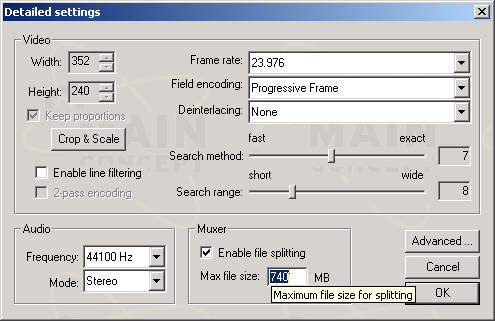
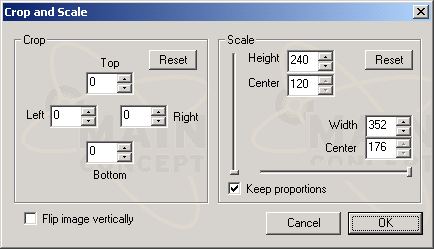
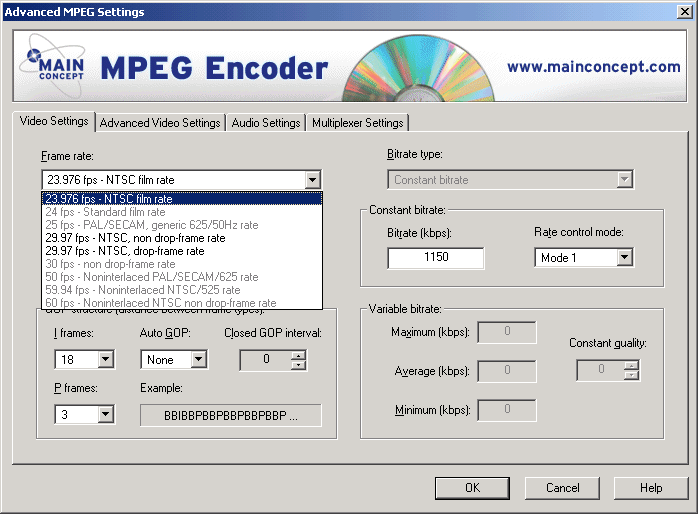
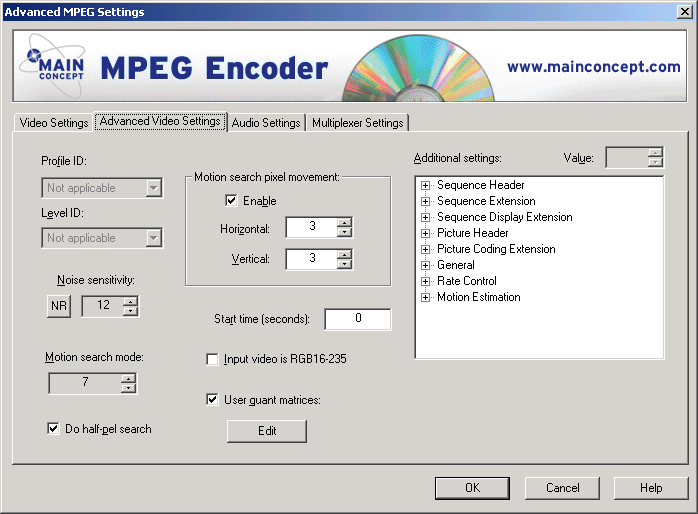
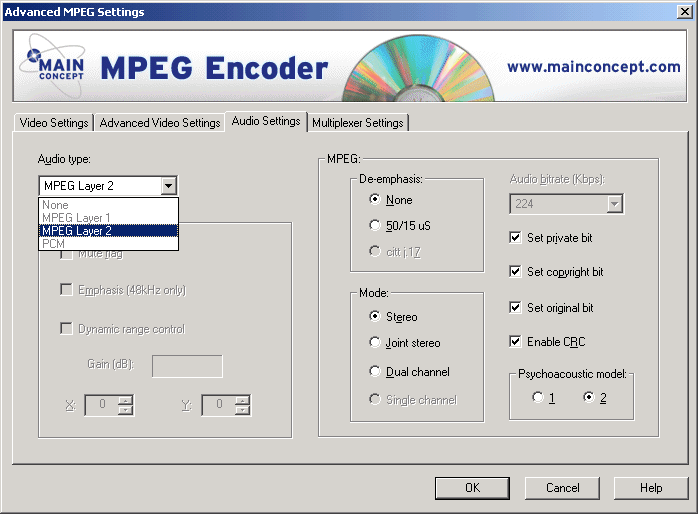

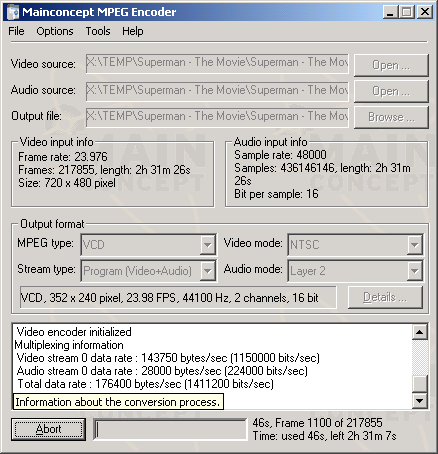
Step
1a
- Open VCDEasy, and set everything according to your specific movie,
and
follow the example below.
( *
NOTE:
Please do not create blank spaces in the Cue/Bin name, as CDRDao may
have a problem burning it later on.*)
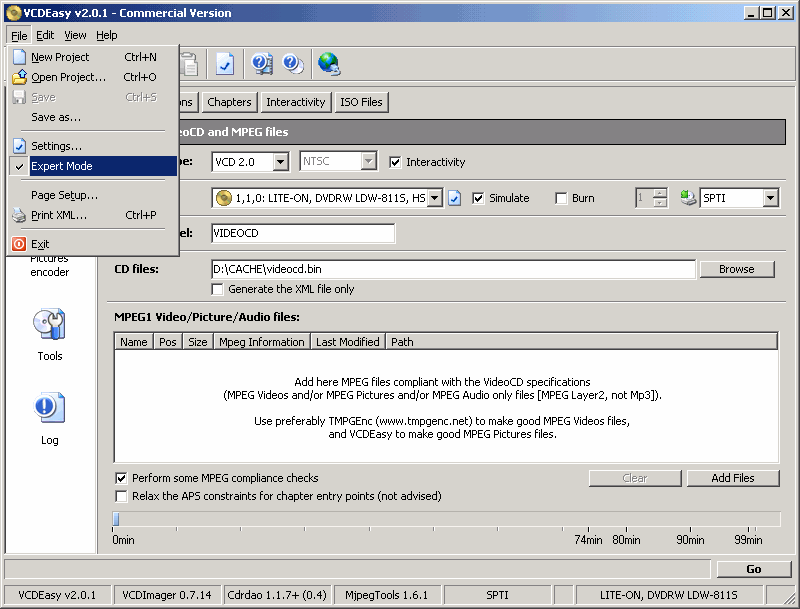
Step 1b - Press the "Add Files" button and select the first of the two files you encoded earlier.
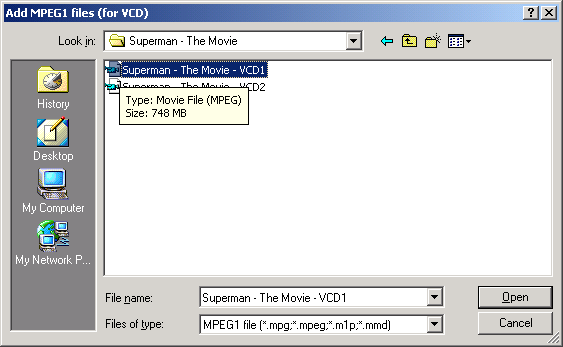
Step 1c - Change the "Volume Label" to reflect the name of the Movie, and also select the "Bin Output File" location.
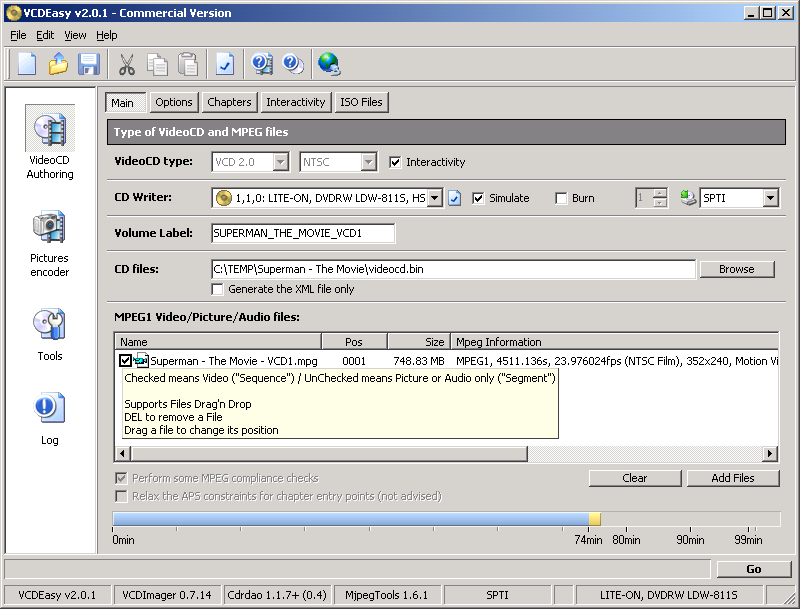
Step 2 - On the "Options" tab you can write down the name of the "Album" and also enable the "Use Playback Control (PBC)".
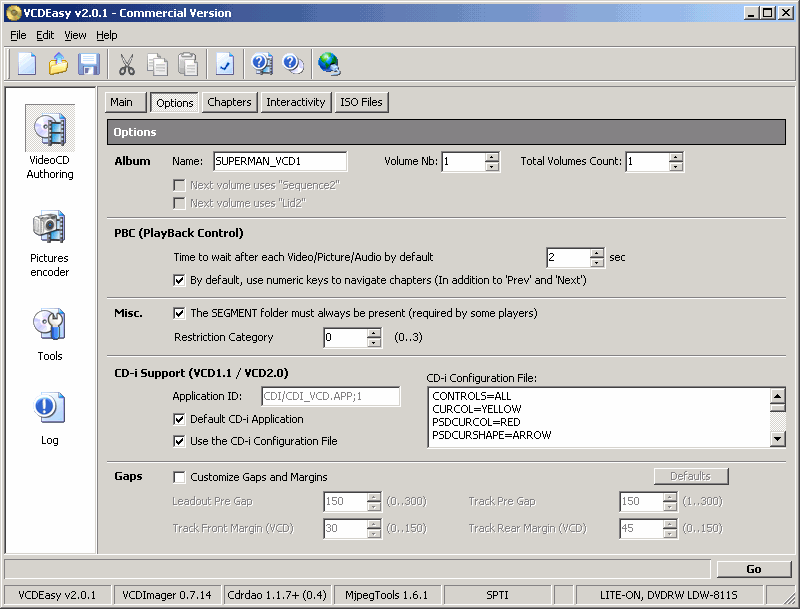
Step 3a - Press the "Chapters" menu item and Here you can select to import the Chapters for your movie, Right Click to get the popup menu so you can import from Smart Ripper or Chapter-X-Tractor.
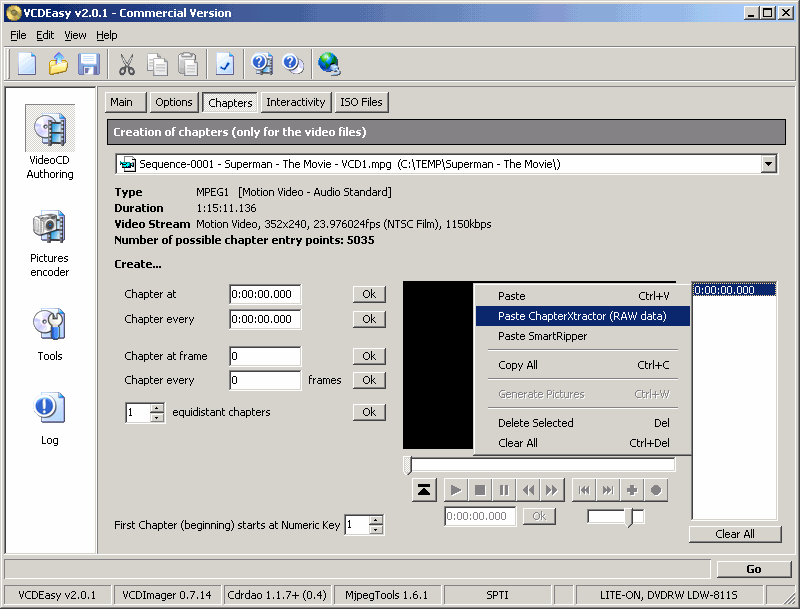
Step 3b - Select the "Start offset" and "End offset " for the first part of the movie and press the "Ok" button.
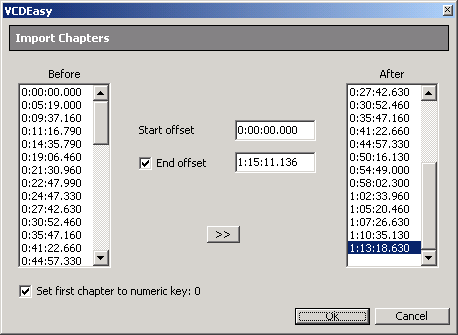
Step 4 - Press the "Go" button, VCDEasy will begin analysing your MPG file and create an Image file for burning.
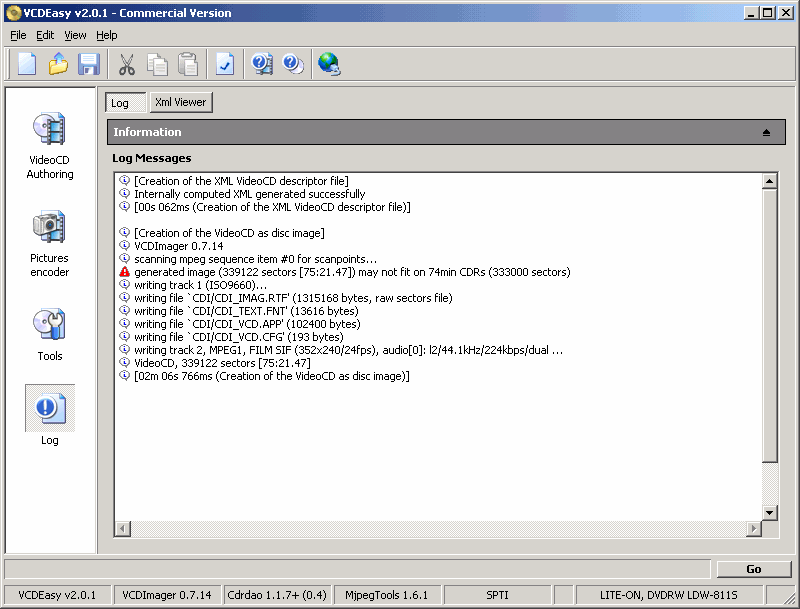
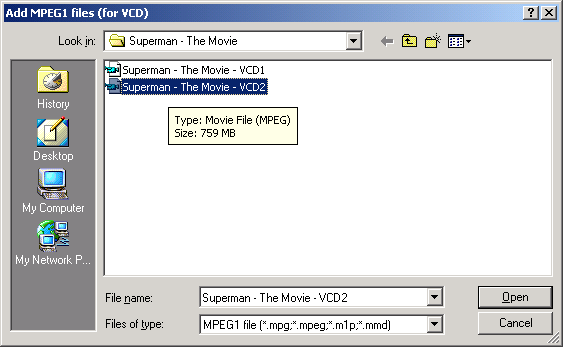
Step 5b - Change the name of the "Bin Output File", so you don't accidently overwrite the previous file (if you didn't burn it yet).
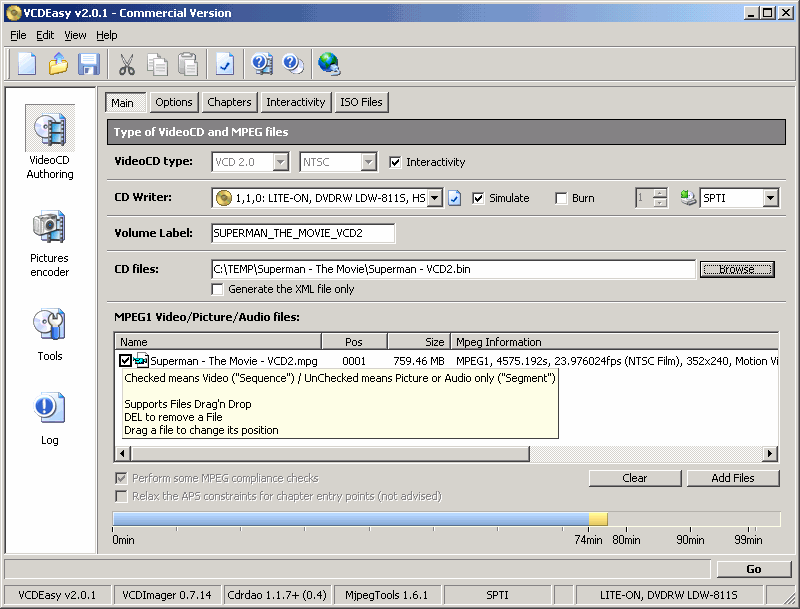
Step 5c - As in Step 3a and 3b, select the Chapters for the second part of the movie, make sure to start a Chapter after the one you last selected on the previous part (3b), and when you are done press the "Ok" button.
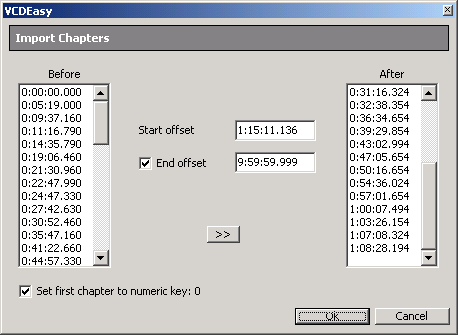
Step 6 - Press the "Go" button again to create
the
second image file of the movie.
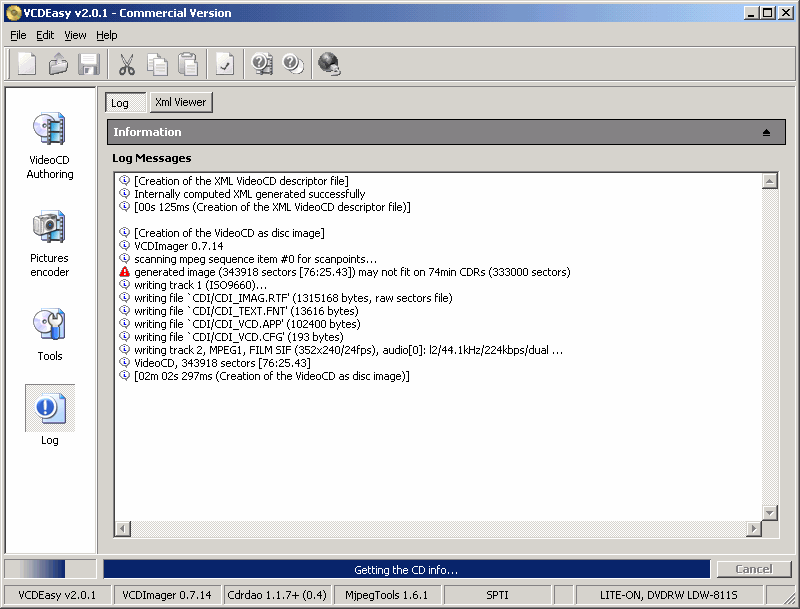
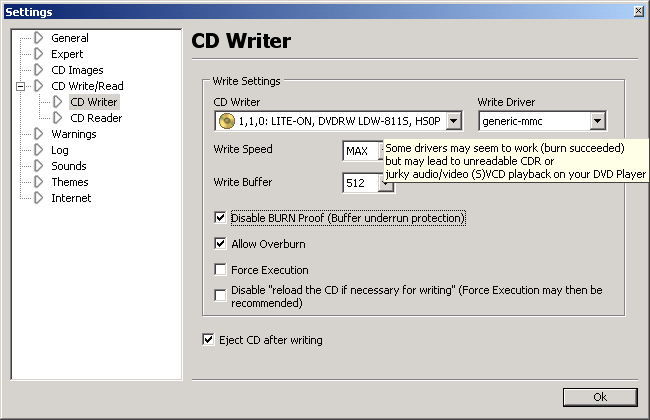
Step 2 - Next, go to the "Tools" section and
select "CDRDao
Tools" from the above menu, here you can "Blank a CDRW " and
also select to "Burn a CUE or TOC CD Image" file, you can also
select to "Simulate" and not actually burn. Press
the " CUE/TOC file" button, and then select the Image you want
to burn.
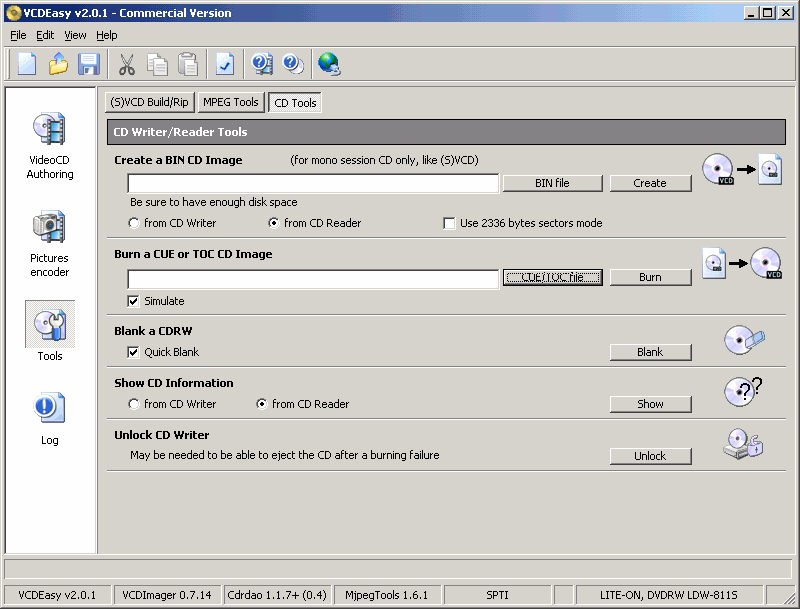
Step 3a - After you selected the first image of the
movie (in
this case Superman - VCD1.cue) then press the "Burn"
button and the writing of the CD will start.
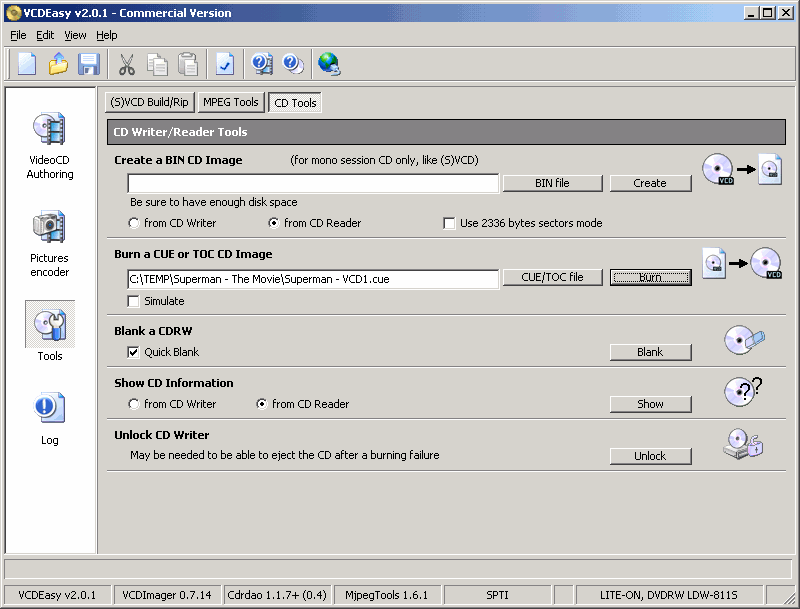
Step 3b - When you are done burning the first part
select the
second image of the movie (in this case Superman - VCD2.cue)
and again press the "Burn" button and the writing of the CD
will start.
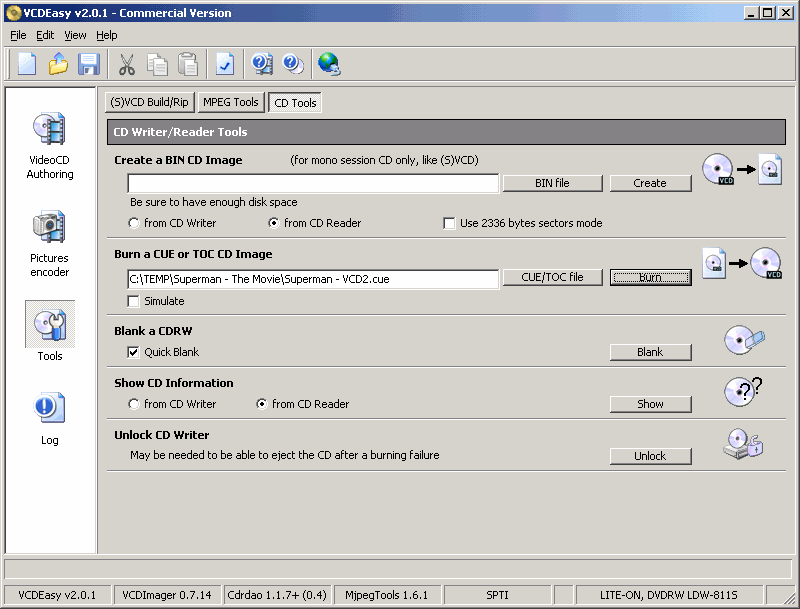
- In Order for TMPGEnc to recognise D2V files, you MUST
have the VFAPI and
the DVD2AVI.VFP
file located where the TMPGEnc.EXE file is! it will NOT work any other
way! It is also sometimes helps to use the Forced Film option in
DVD2AVI, but only if you are still unable to open the D2V files with
TMPGEnc. (suggsted by msfox)
- In some DVD movies the Audio Track is located on the second
track, so you might want to try in DVD2AVI to rip the secondary Audio
Track, if you are not sure which Audio Track to choose, open the
Chapter-X-Tractor text file and you can check in there.
- Also in some movies the Audio Track is a DTS and DVD2AVI is
incapable of handling it and converting it to WAV, I would recommand
you find a diffrent track, there is usually both DTS and AC3 tracks,
use the information files by either Smart Ripper or Chapter-X-Tractor
to find out if your movie has an AC3 track and if does, then on which
track it is, and if there isn't find the next best alternative which
would be the 2ch track.
- Make sure when you encode the movie that you use the currect
Template for your movie, an incorrect Template will cause A/V sync
problems and not to mention the resolution will be distorted (if you
use PAL on NTSC and NTSC on PAL).
- If you are having problems copying the Movie VOB files to your
HDD, I suggest you check your ASPI Layer, the ASPI that comes with
Windows9x, Millenium are not good for ripping, update them, and
Windows2000/XP does not come with an ASPI Layer at all! make sure you
download the latest ASPI for your system, use ONLY WinASPI v4.60 Build 1021
(work on 98/Me/2000 and XP!)
- If Smart Ripper or any other of the DVD Copying programs are
unable to access your DVD Movie, try to first play the disc using any
Software DVD Player, and then try to re-run the program.
- Because the Copying program always selects as default the
longest running title of the DVD, it might select the wrong title, So
make sure the VOB's that were copied are indeed the VOB that belong to
the movie itself and not the Extra features (e.g. Pearl Harbor).
- FlaskMPEG does NOT come with the Panasonic MPEG1 Plugin, you
must get and install the plugin on your own, it is NOT a freeware.
- DVDx and FlaskMPEG require the IFO file, so make sure you rip that you select "Files Mode" or "Backup Mode" in your ripper.
- There is a bug in VirtualDub v1.4.10 which causes the Handler not to work, so use the Handler installer from v1.4.9 or switch to the latest version v1.5.1 as the bug was fixed in the later releases.
Sefy Levy,
Certified Computer Technician.